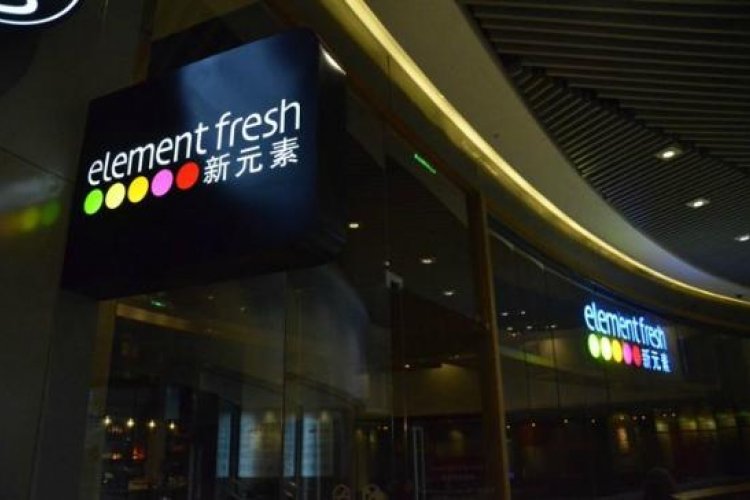A Drink With: Andrew Ahn Korean Celebrity Chef at Maru
A Drink With is a regular column in which we ask Beijing personalities to tell us about their drinking habits and preferences. This issue, we talk to Andrew Ahn, chef at modern Korean restaurant Maru, and frequent star of TV cooking show Go, Fridge! Ahn speaks perfect Chinese, and can boast having experienced Beijing life through a plethora of alcoholic drinks.

Tell us a bit about yourself, what brought you here and what that was like.
I arrived in Beijing in 2009 to work for Four Points by Sheraton Hotel. Then I opened Ssam (which later changed its name to One Pot) to serve healthy contemporary Korean cuisine in Sanlitun Soho. Recently I opened Maru, an innovative, modern Korean restaurant in Hopson One.
How old were you when you started drinking?
At 18 years old, after graduating from high school. It’s a Korean tradition that fathers talk to sons over a shot or two of soju [a distilled Korean wine with between16-53 percent ABV] about the strict rules of drinking etiquette in Korea, such as: one must hold the glass with two hands and bow when receiving a glass from an elder, never leave a friend’s glass empty, turn away from one’s elders and cover the mouth with one’s hands when drinking, and do not refuse an elderly person’s offer of a drink because it’s seen as impolite. Even though I had many chances to drink with friends during high school, I saved that special moment for my dad.
Tell us about the first time you were drunk.
There were only five universities during my time as a student, and my parents didn’t want me to be too far from them, so I chose the nearest university, in Daegu, to study culinary arts. I shared an apartment with my friend at that time, and we served our friends alcohol every day. One day, I came back home after having had a bad day waiting at the restaurant I worked at, so I gulped down an entire bottle of soju in front of my friends in one go. I felt much better at first, then after a while, I noticed the floor approaching me. That day finished with lots of vomiting.
Who would you most like to go out drinking with?
Guan Yu or Zhang Fei. They were the bravest generals during the Three Kingdoms Period, and became gods of war to the Chinese. They were heroes in history, and famous for their drinking capacity. I’d like to see how they drink, what they drink, and how much they can drink! [Laughs]
What’s your favorite Chinese food and drink pairing?
Luzhuhuoshao ( a mixture of stewed pork intestines with wheat bread) at a restaurant called Beixinqiao Luzhu or chaogan ( pig’s liver and intestines) at another eatery called Qingfeng Baozipu. Baozi with erguotou for breakfast – that is the best way to start a day in Beijing like a local. Or grilled mantou seasoned with stinky tofu, dipped in sesame oil, and paired with fresh scallion from Shandong, again, while drinking erguotou.
What’s your most outrageous drinking experience?
When I did the two-year mandatory Korean military service when I was 19 years old, the welcome drink was a noodle bowl full of a concoction of beer, soju, water, Sprite, chili powder, even the dirty water from someone’s sock laundry ... and a goldfish that was still alive. You had to swallow the poor little goldfish. That is the most disgusting experience that I would rather never recall again.

What’s the best drink to pair with Korean cuisine?
Makgeolli (4-9 percent ABV), a milky, off-white, and sparkling rice wine that is sweet, carbonated, and drunk like beer among Koreans. Cheongju, a clear and refined rice wine (think the Korean version of sake), was in the past only accessible to the upper class, but life changed after the revolution and it became really popular in Korea. Soju, however, is distilled from sweet potato. It was very cheap and packed 50-60 percent ABV, and was the most common drink for the working class in the old times, though it’s become less alcoholic as time has gone by. Poktanju (“bomb drink,” similar to a boilermaker and involves dropping a shot of soju into beer) popular now. So I would pair makgeolli and cheongju with most Korean dishes, and soju with spicy and savory food (such as grilled pork intestines AKA sundae).
READ: Korean Celebrity Chef Andrew Ahn Blends Tradition and Innovation at Maru, Hopson One
Read the issue via Issuu online here, or access it as a PDF here. Otherwise, grab a hard copy at your favorite outlet around town!
More stories by this author here.
Email: tracywang@thebeijinger.com
Twitter: @flyingfigure
Instagram: @flyingfigure
Photos courtesy of Andrew Ahn








